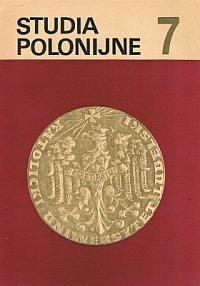Szkolnictwo polskie w Austrii (1945-1950)
Main Article Content
Abstrakt
The Polish education in Austria (excluding Vienna) in the post-war period is divided into two periods depending on its aim and the curriculum. The first period covers the years 1945-1950, while the other begins in 1952 when the first Polish Saturday schools came into being. The following article deals only with the first period.
There were about 80 thousand Poles including many children and the youth in Austria with the end of the war. There were also some teachers among the prisoners of war and the people who had been compulsorily transported to the Reich. Immediately after the war, the teachers organized the education and began their work. The Polish priests eagerly supported their activities. The aim of education was the same as in the country. The structure as well as the curricula were equally alike. The system of education was based on the Education Act of March 11, 1932 O ustroju szkolnym. There were over 20 primary schools in 1945. This number was gradually decreasing during the process of repatriation. The last school was closed in 1950. In 1945-1948 there was a Polish gymnasium in Salzburg; in 1945/46 there was also a Polish secondary school there. Simultaneously, there were some nursery schools and several dozens of technical courses. The Polish education in Austria continued the aim of the pre-war education in Poland. New situation and migrant conditions, however, were taken into account. It was to serve the children who were waiting for the repatriation. They were thought in order to be able to take up the education in Poland on the same level. There was a serious lack of handbooks and other teaching aids. Frequent movements of the people considerably disturbed the education. Thanks to the teachers, some school books were printed in Austria while the rest was sent from the Second Corps from Italy where nearly all the books and curricula were printed in 1942-1946. Many of these books reached the schools in Western Germany and Austria. The Second Corps provided also other teaching aids. Some books were printed by the Polish publishers in Western Germany and other countries. Libraries were organized in the schools and other Polish centres.
The pupils were actively engaged in some extra cultural activities and youth organizations. They belonged to choirs, theatrical and dancing groups. Scouting was particulary popular. Nearly all the pupils belonged to it.

